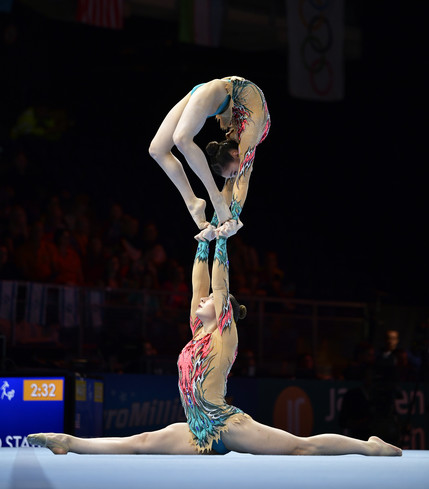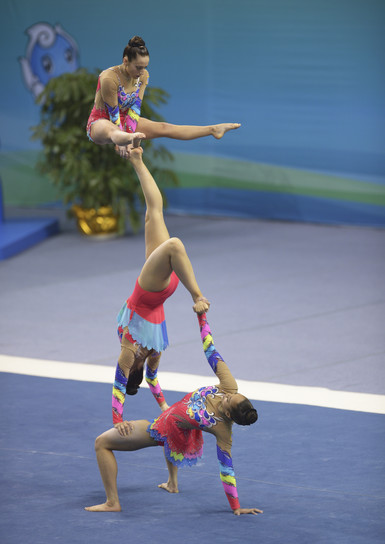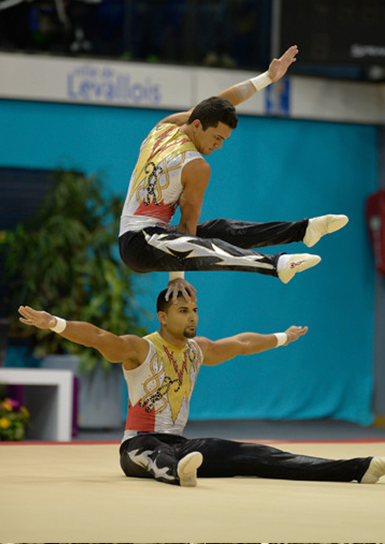Partnership among peers
In each partnership in pairs there is a partner, who is the base and stays on the ground, and a partner, called a top or agile, who works on the base partner.
In each association in the groups, one or two partners remain on the ground and are the base, another partner is the top or agile and one or two partners are the middle, who connect the base with the top or agile.
Types of elements
There are two different types of skills used in Acrobatic Gymnastics: balance elements and dynamic elements (elements with flight). These elements are chosen from the FIG Acrobatic Gymnastics Difficulty Tables.
- For the 11-16 group, there are only 2 routines, one Balance and one Dynamic.
- For the 12-18, 13-19 and Adult groups, 3 routines are presented: Balance and Dynamics, plus a Combined routine that includes elements of Balance and Dynamics. This Combined routine is used as a finale in most competitions.
The characteristic of balancing elements is that partners must remain connected throughout the element. The base and the agile are allowed to make movements, as long as they maintain contact. The final position should be a static hold of 3 seconds.
The characteristic of a dynamic element is the opposite of balance. Partners must have separation or show flight during the element.
All routines at any level require choreography with music that connects the elements of difficulty using dance.







